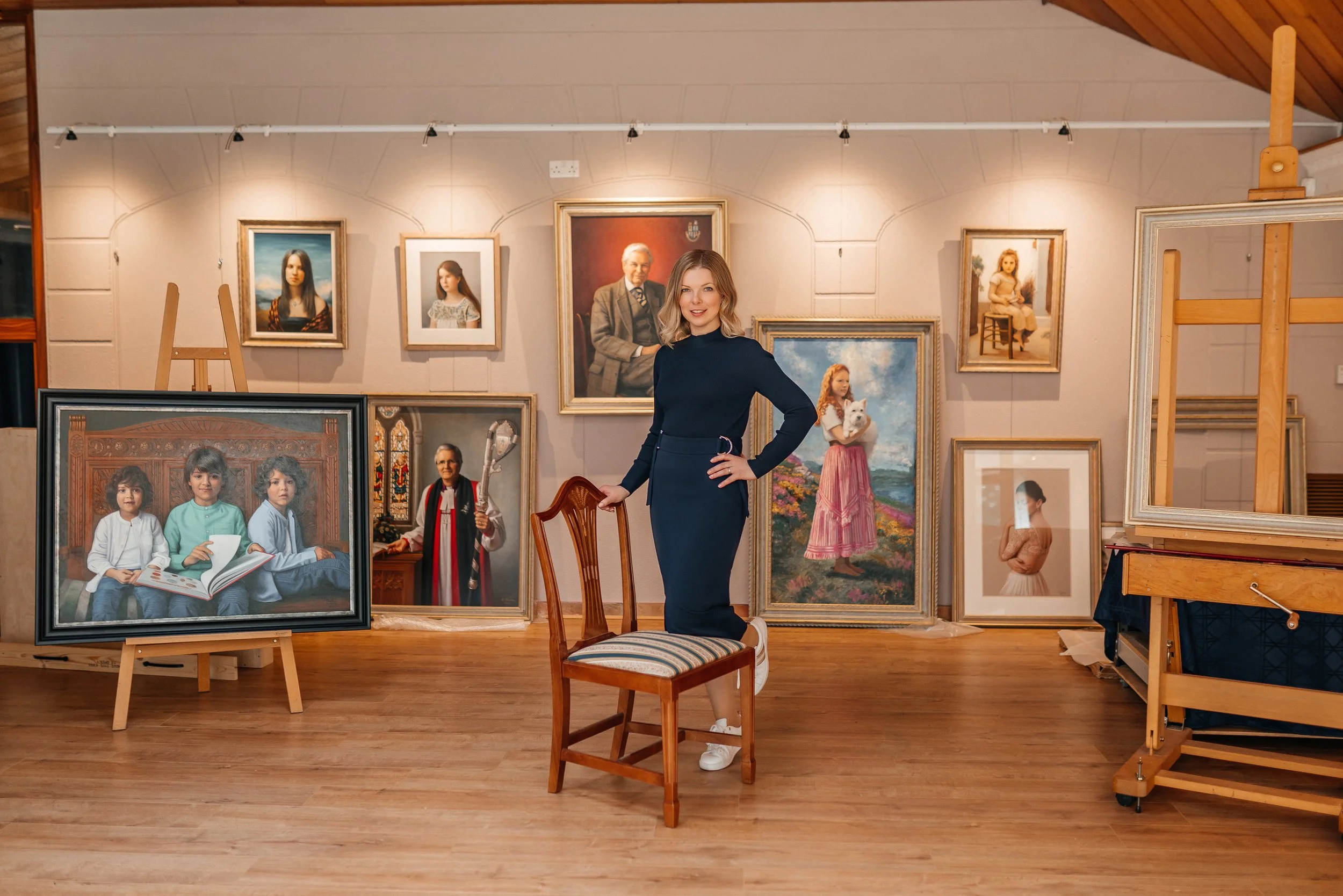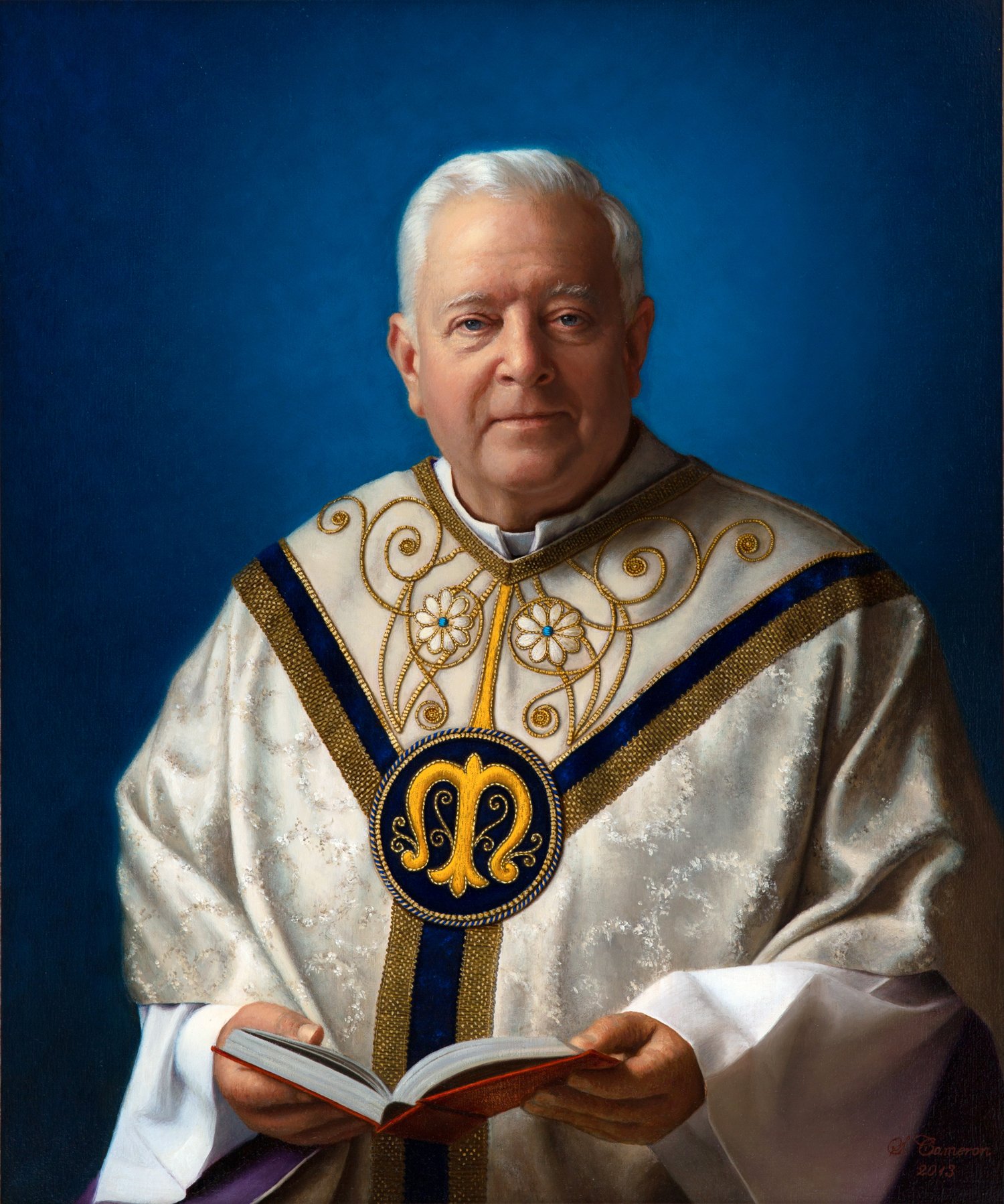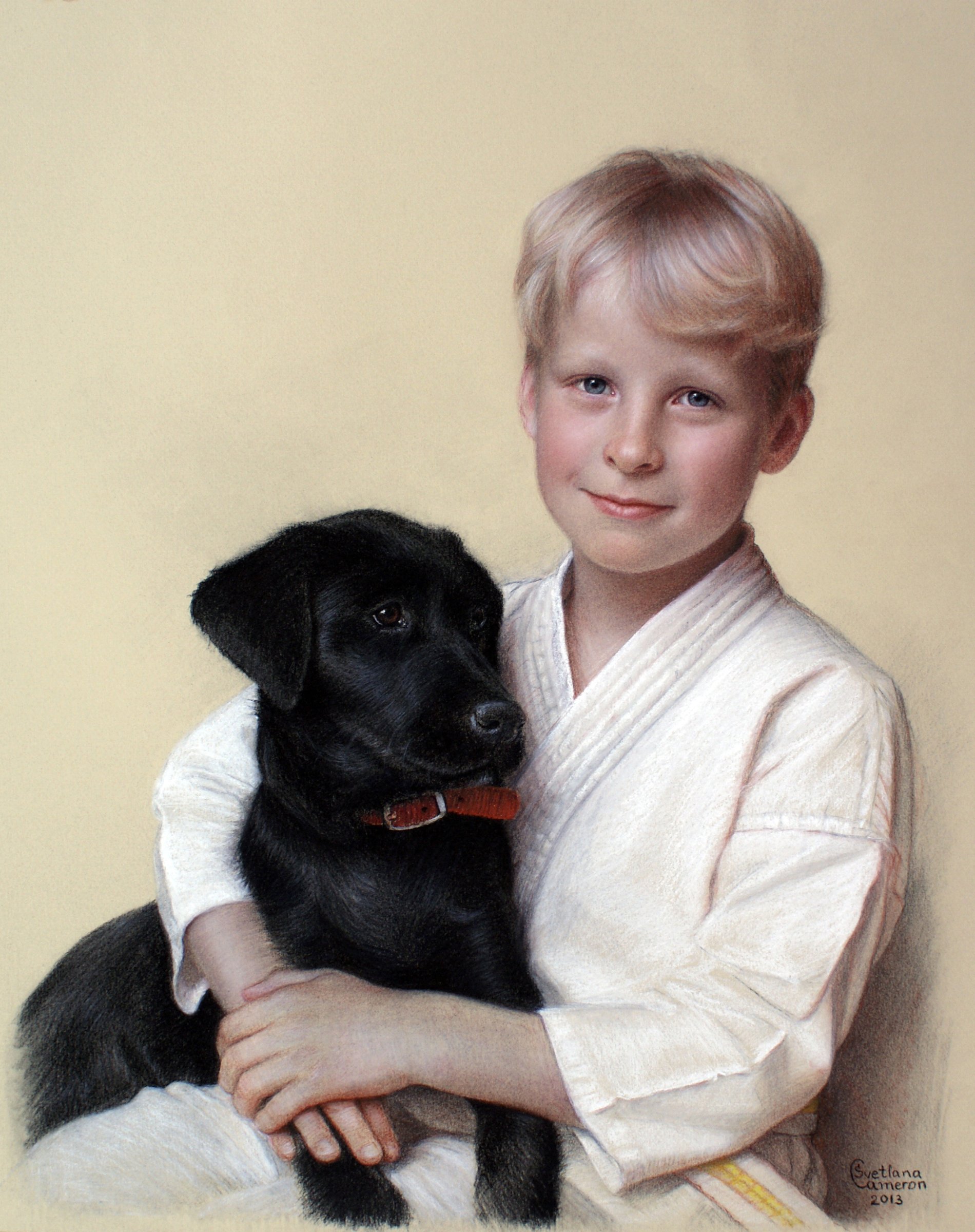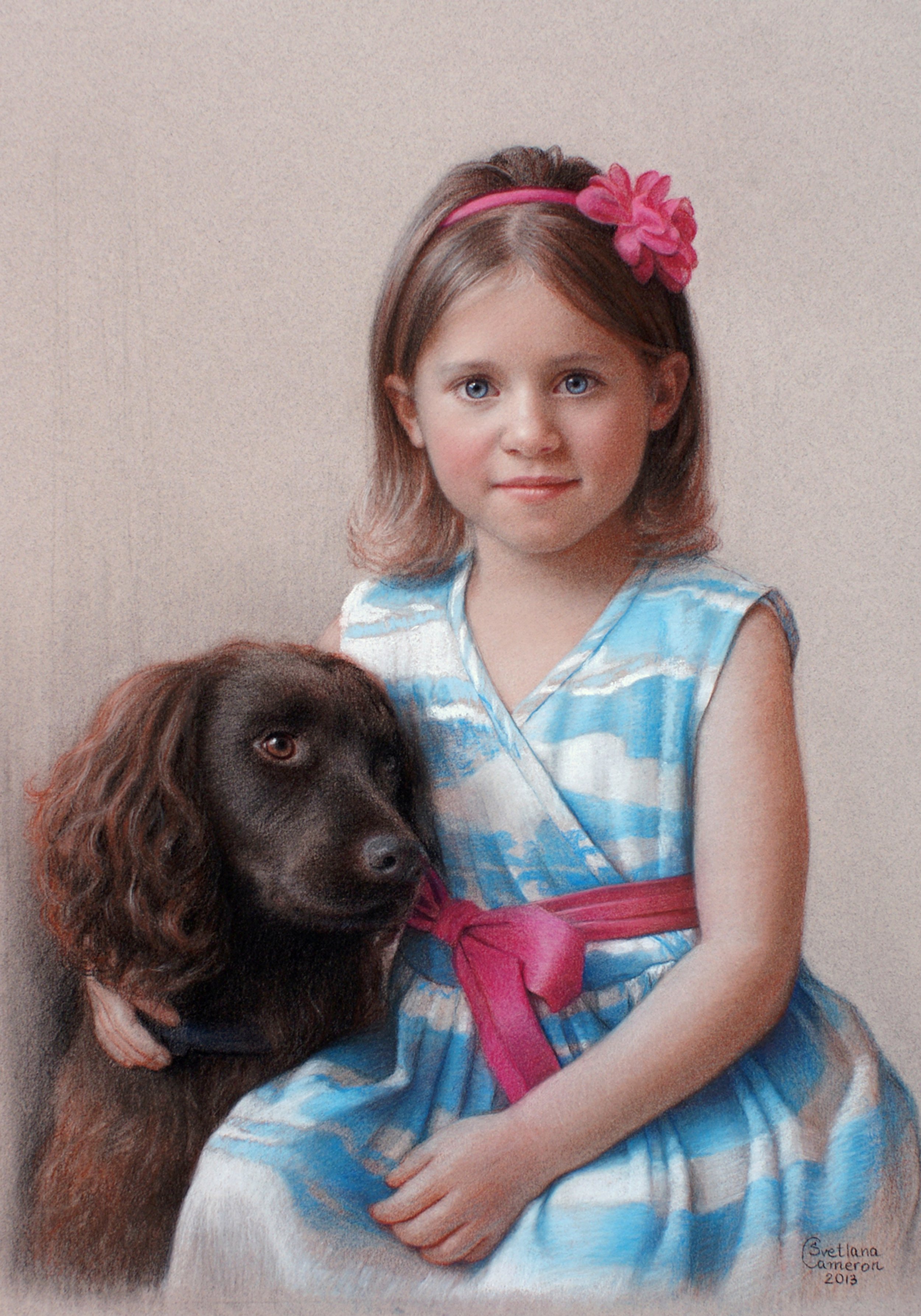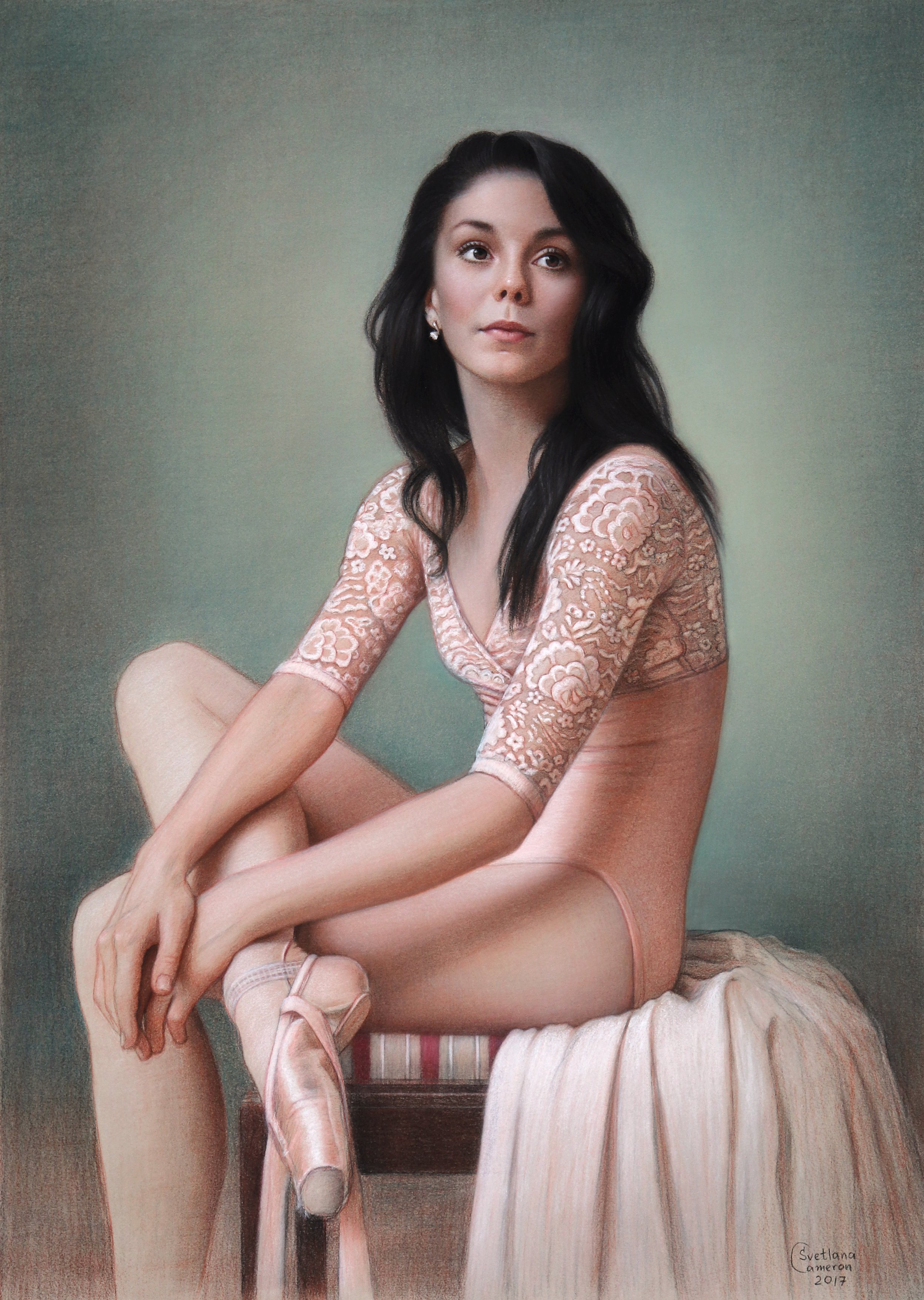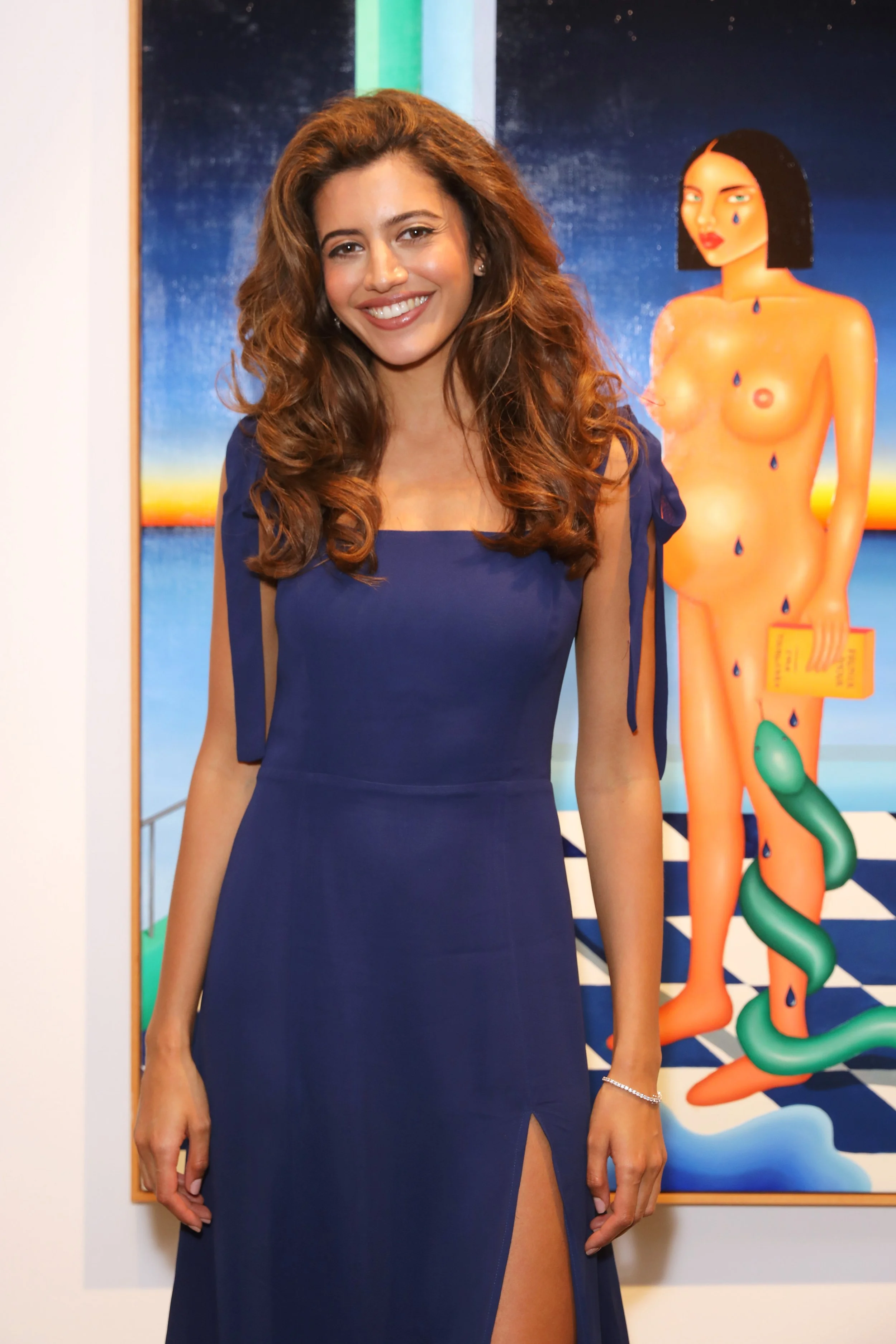10 QUESTIONS WITH BRITISH CONTEMPORARY PAINTER, SVETLANA CAMERON
Svetlana Cameron is a contemporary British realist painter specializing in classical portraiture. Trained in Italy in the methods of Old Masters, Cameron is dedicated to the modern interpretation of the Renaissance painting techniques. She is best known for her highly detailed oil portraits of dignitaries in ceremonial wear, as well as delicate private portraits of women and children created in her own dry media technique which involves use of charcoal, sanguine and pastels.
Cameron has received a number of international awards, including the Leonardo da Vinci Art Prize in Florence, Woman Art Award at a UNESCO event in Rome, and the ‘Living Master’ status awarded by the Art Renewal Centre in the USA. Her portraits hang in the collections of the British Royal Regiment of Artillery, Isle of Man Parliament, Roman Catholic Church, as well as numerous private collections in England, Scotland, Isle of Man, Switzerland, France, Ukraine, Malta, Russia, Singapore.
Svetlana Cameron is based not far from London, where she maintains a private art studio in East Sussex. A sought-after portrait painter, she travels across the UK and Europe to exhibit her works and meet with her sitters.
1.) Good morning Svetlana, welcome to The Mayfair Musings! How long have you been painting for?
I’ve enjoyed drawing and painting since my childhood, but initially did not think of art as a possible career. I studied foreign languages and art history in university and started my working life as a guide-interpreter for foreign visitors in national art museums. Being surrounded by masterful works of art had a strong inspiring effect on me and I began to draw and paint a lot during that time. In 2003 I enrolled in academic drawing and oil painting courses to get proper classical training. I also tried experimenting with various other mediums: watercolours, acrylics, pastels, even clay modelling. I tried my hand at landscape, still life and even abstract painting. But no matter what I did, I always gravitated towards classical portraiture. I loved working with people, and my tutors soon noticed my natural ability to capture likeness and character of my sitters. In 2005 I began to accept commissions and soon became a full-time portrait painter.
2.) Where did you learn to paint and what led you towards Classical Realism?
Like many artists in the past, I travelled to Italy to seek classical training. A portraiture course at the Florence Academy of Art became a turning point in my life: I discovered and got to know Renaissance art. It had a profound effect on me and set the direction for my whole future career. I got particularly interested in two Renaissance techniques: the multi-layered Flemish oil painting method, and in the Italian three-colour drawings in which artists used a combination of black, red and white chalks. I began to research those time-tested methods, gather all available information, and try to re-create those effects using modern art materials. The results of my studio experiments were encouraging: my works began to get noticed by the art lovers and professionals. I was surprised to find out that those traditional techniques were little known, as they are no longer taught in art colleges. It became my goal and mission to revive them and make them relevant and recognised in the contemporary art world.
3.) What are your ingredients for an excellent portrait sitting?
If we are talking about the technical side, lighting is the most important thing for me. The light should fall in a particular direction, in the correct controlled amount, in order to create the light/shadow effect which I aim to have in my artworks. I put a lot of effort into making sure we have it right on the day, regardless of whether we meet in my studio or at my sitter’s location.
From the psychological point of view, it is important to break the ice and establish an emotional connection with the sitter. Posing for a portrait is something most people do for the first time. Allowing someone to scrutinize your face and figure while keeping still and trying to control your pose and expression is the experience that can make even a most confident person feel awkward. A good portrait painter needs to be able to conduct the sitting in a way that puts a person in a desired mood, and makes them feel open and relaxed. This skill of creating a certain mood and tuning in with the sitter’s emotion is even more important than the ability to re-create likeness or match colours accurately. Without it portraits will not look ‘alive’ even if the likeness is accurate.
4.) We love your portrait of General Sir Timothy Granville-Chapman. Can you tell us a little about the techniques used and the overall experience of creating such a well esteemed painting?
The portrait of General Sir Timothy Granville-Chapman was one of the most memorable experiences in my career. It is a portrait of the 31st Master Gunner St James’s Park - the official title of the head of the Royal Regiment of Artillery – commissioned to hang in the Royal Artillery building in Larkhill, Wiltshire. The tradition to commission Master Gunners’ portraits goes back more than 200 years. During its 300-year history the Regiment has accumulated many artworks in their collection, many painted by famous artists of the previous centuries. To be asked to create a portrait of such a distinguished person for a historic museum-quality collection was a great honour and challenge at the same time.
I created the portrait in a multi-layer Flemish oil painting technique which I felt was perfectly suited for capturing not only the person, but also the numerous textures in the composition: wool, satin, gold, silver, enamel, metal, wood, stone, paper, and other textures that can be found in the composition. The process involved about 10 meetings with the General in London and Wiltshire, tree visits to the Royal Artillery building, and about 8 months of work in my studio, using a combination of my own reference photos and some real props and uniform items which I was allowed to borrow and keep in my studio. When the portrait was completed, we had an unveiling ceremony in the presence of nearly 100 guests, which was followed by an invitation to attend the annual officers’ White Tie Dinner later that year.
5.) Are you currently working on any exciting paintings?
I have six ongoing projects, all very exciting, but I prefer not to share too many details until they are unveiled. I am painting a range of oil and pastel portraits for clients from England, Sweden, Ukraine and Japan.
6.) Which artists, past or present, inspire you?
I love art that demonstrates a combination of three things: 1) technical mastery, 2) balanced carefully thought-out compositions and 3) deep profound meanings communicated through narrative elements and hidden symbols. I particularly admire works by the artists of the Italian and Northern Renaissance periods: Leonardo da Vinci, Raphael, Botticelli, Bronzino, Holbein, Van Eyk, and some others. I also draw a lot of inspiration from the Dutch artists of the Golden Age: Vermeer, Rembrandt, Gabriel Metsu, Pieter de Hooch, and their contemporaries. Their art has so much aesthetic beauty and so many layers of meanings I can never tire of looking at them.
7.) Tell us a little about your studio and the environment you like to paint in...
I am fortunate to have a spacious studio set in the garden of our family home in East Sussex. I love the way it is detached from the house: when I go there I step into my own world, tranquil and inspiring, with no distractions. I often leave my phone behind or disable the sound notifications. I usually listen to classical music or audiobooks when I paint.
Last year I invested in a proper gallery hanging and lighting system, which now gives me an opportunity to display my works in my studio. In addition to the painting zone, it also has an office area where I do all my admin work, and a sitting area where I welcome visitors. My studio is easily accessible by direct trains from London and Gatwick airport, and many of my clients and sitters enjoy coming down to see me. There are many natural and historic attractions in the area to complement a visit to my place.
8.) Do you have any exhibitions coming up in 2022?
I had a large solo show last year, which means I am not planning one right now as I need time to create new works. But there are quite a few group exhibitions at prestigious locations in my 2022 calendar. Right now two of my portraits are hanging in the Watts Gallery in Surrey, as part of the exhibition by the Society of Graphic Fine Art, alongside the ‘Pre-Raphaelite Treasures’ exhibition featuring drawing from the Ashmolean Museum.
My other confirmed events this spring include ‘Woman’s Essence’ show in Gallerie 24B in Paris opposite the Louvre Museum on 21-24 April and SGFA show in the Mall Galleries in Pall Mall, London on 17-21 May.
There is one autumn event which I have not announced yet: I am selected to participate in Barcelona Art Biennale at the European Museum of Modern Art in November. This is really exciting! It has been my dream of the last few years to exhibit in that particular museum, and I am really looking forward to this opportunity.
9.) What do you love most about Mayfair?
I love everything about Mayfair: world-class art, beautiful period architecture, fine dining, excellent service, the atmosphere of luxury. I chose a Mayfair venue – the D Contemporary Gallery for my last year’s solo exhibition, and it was an top-class experience both for me and my collectors, guests and visitors.
10.) When you are not busy painting, where can you be found and what might you be doing?
Most of all I love travelling and visiting museums and galleries. I learn so much by observing other artist’s works, get a charge of inspiration and new ideas. I also love opera and classical music. When at home I enjoy spending time with my family – I have a husband, two lovely sons and a really lovely Swiss Mountain dog called Belle. If I am not in my studio, you can usually find me in the kitchen cooking something delicious for them. I find cooking a very creative pastime.
Svetlana Cameron is represented by Mayfair Art Consultancy. For a personal introduction to Svetlana Cameron, please email victoria@mayfairartconsultancy.co.uk



